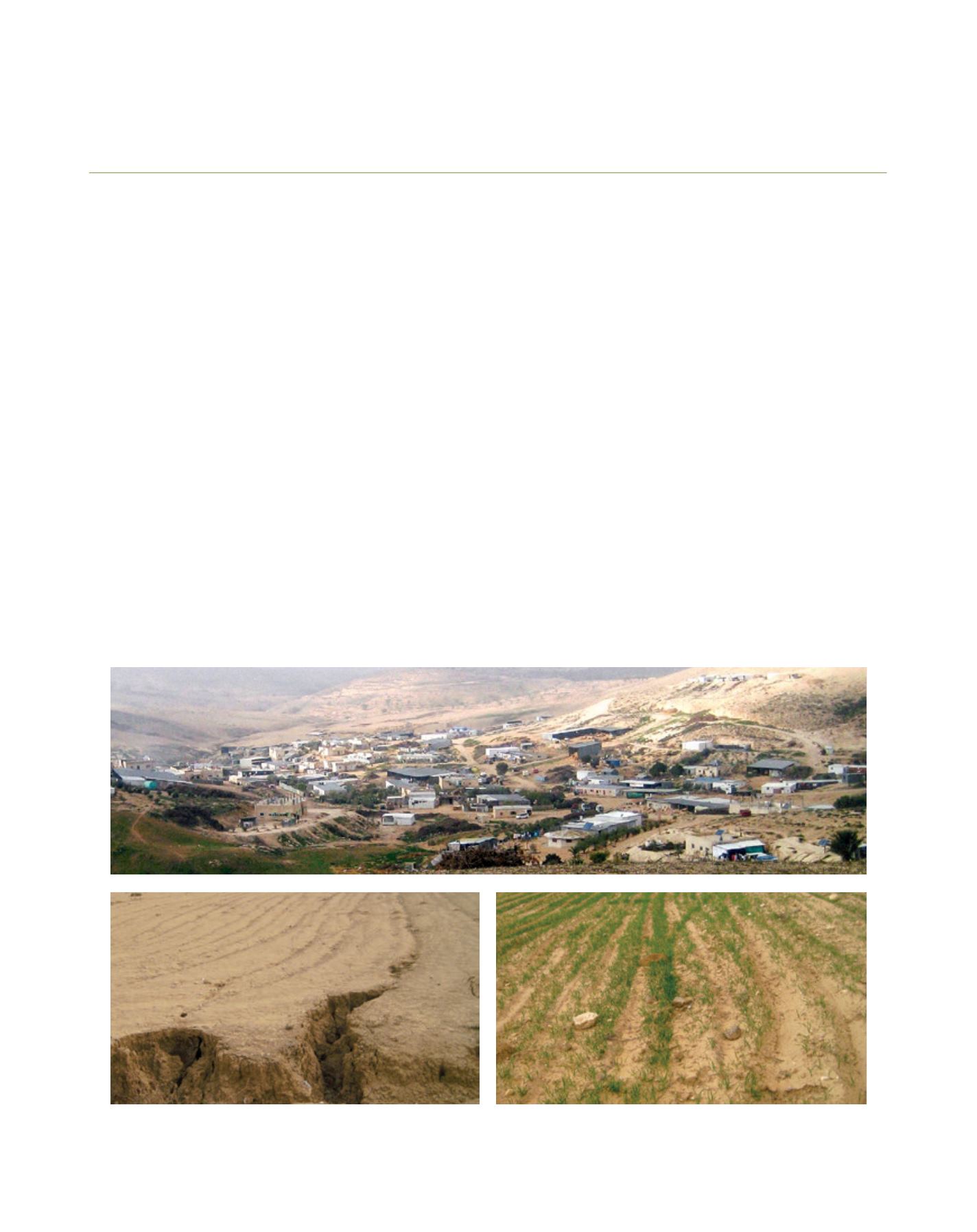

[
] 163
Soil and the living land — threats and responses
Uriel Safriel, The Hebrew University of Jerusalem and The Jacob Blaustein Institutes for Desert Research, Israel
S
oil constitutes the infrastructure for all terrestrial
life on Earth. Jointly, soil and the life it supports
make the living land, whose fertility caters for plant
productivity, which generates food for all other terrestrial
organisms, mankind included.
Soil provides mechanical anchorage and nourishment to the
land’s plant cover, which injects to the atmosphere the oxygen we
breathe, and absorbs atmospheric carbon dioxide thus regulating
the climate. Jointly with its underlying soil, the land’s plant cover
is engaged in water filtration and regulation locally, and in driving
the water cycle globally. The soil functions as a bioreactor for recy-
cling nutrients, as moisture and water storage, and as a repository
for organic matter that facilitates water-holding capacity, and its
sequestration contributes to climate protection. All these life-
support benefits to mankind travel across scales, from current to
future generations, from local to global land. But when the land
user inadvertently harms the soil of his land, the repercussions of
the resulting local fertility loss travel far, in time and space.
Loss of soil fertility is detrimental to the local land user,
hence local responses to prevent it are required. Direct users of
land productivity are often unaware of the losses or they lack
tools and resources for proper responses. The global indirect
users of soil fertility often possess the knowledge, technologies
and financial resources required by the local, direct land users.
Therefore, cooperation between the local direct and the global
indirect users of soil fertility would benefit both — it would
outweigh the short-term costs of using the soil prudently borne
by the local direct user, and the cost of international develop-
ment aid borne by the global indirect land user.
Themajor threat to soil fertility is when its exploitation, directed
at increasing land productivity that is of economic value, leads to
soil erosion, losses of organic and mineral compounds, and salini-
zation at rates faster than natural. Rather than the aspired increase
in economic land productivity, the land use practices bring about
a persistent and often irreversible productivity decrease relative to
the soil’s potential fertility. This persistent reduction in the land’s
biological productivity comes under the heading of ‘land degrada-
A Bedouin village in the Negev dryland of Israel: its degraded land due to ploughing (left) is a candidate for restoration; ongoing degrading land use (right) can be
offset when the degraded land has been restored
Images: Uriel Safriel
L
iving
L
and
















